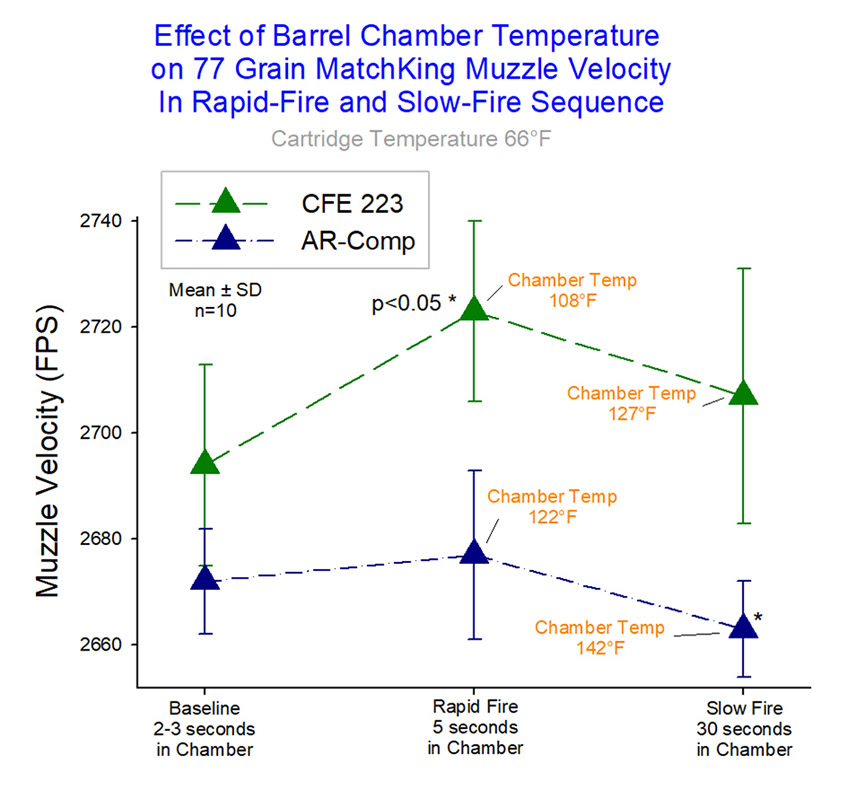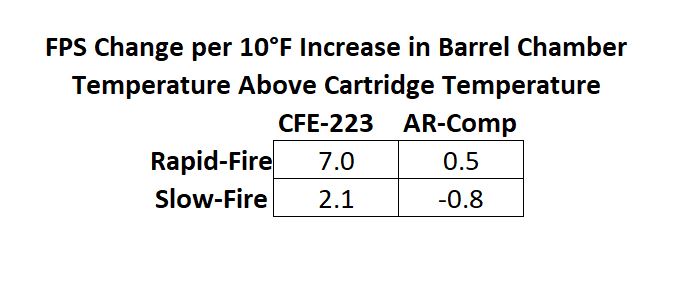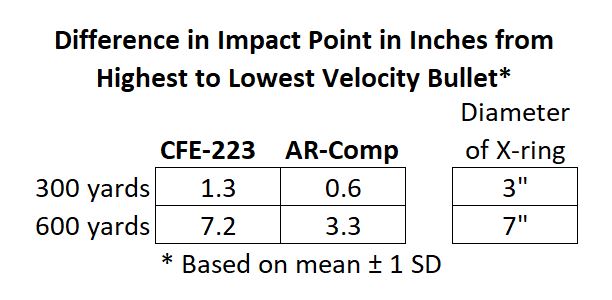Tables 6 and 7; Figure 3
What does powder temperature sensitivity have to do with .223 service rifle target shooting performance in the real world?
Bullet velocity changes associated with powder temperature changes occur under two main conditions. The first is ambient temperature change where cartridge temperature equilibrates with whatever the bullet storage temperature is wherever you are shooting. The second temperature change condition occurs when the cartridge is loaded into the rifle chamber. In a direct-impingement AR style service rifle, the chamber temperature can easily vary from slightly above ambient to more than 145°F during a string. During the course of the rapid-fire and slow-fire shooting sequences cartridges can be seated in the chamber for between 4 and 40 seconds before being fired. This permits significant heat transfer from the chamber through the cartridge to the powder.
In the next test, I compared the performance of a temperature-sensitive powder (CFE 223) with a less temperature-sensitive powder (AR-Comp) in simulations of rapid-fire sequences (cartridge in chamber for 5 seconds before being fired) and slow-fire sequences (the cartridge is in the chamber for 30 seconds before being fired). In each test, 10 rapid-fire rounds were fired before the test to heat up the chamber. Chamber temperature was recorded before and after each string of fire using a digital thermometer with a metal probe inserted into the chamber (see methods).
Data from the test with 77 grain Sierra MatchKing bullets are presented in Figure 3. Cartridges at 66°F placed into hot chambers for 5 to 30 seconds had significant alterations in bullet velocity. Variation in velocity (standard deviation) was larger in the CFE 223 group than in the AR-Comp group.
 |
Data was normalized because the two tests had been run at with chambers at different temperatures. (See Table 6). CFE 223 had greater alteration in velocity per 10°F than AR-Comp.
 |
Table 6
What does this difference in velocity change per 10°F between and differing standard deviations of the two powders mean for impact points of bullets at 300 and 600 yards? The mean and one standard deviations encompass 68% of the bullet velocities in a data group. Velocity difference between the baseline mean minus one standard deviation and the rapid-fire mean plus one standard deviation was calculated for CFE 223. Velocity difference between the baseline mean plus one standard deviation and the slow-fire mean minus one standard deviation was calculated for AR-Comp. Maximal high and low values of the velocities for CFE 223 and AR-Comp were entered into a ballistic program to estimate the difference in impact point at 300 and 600 yards for the two powders. Data in Table 7 shows that temperature-sensitive CFE 223 produces much greater difference in bullet impact points at 300 and 600 yards under match-firing conditions than does less temperature-sensitive AR-Comp.
 |
Table 7